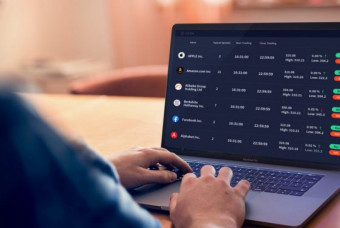Due to the COVID-19 pandemic, schools are closed. Students must stay at home and learn online. They have started online education instead of traditional education.
Both online learning and offline learning cover different ways and methods of training and explaining. In some cases, both ways are required to support their knowledge. What’s the difference between online and offline study and which type is the best for an exam?
Online learning
Online study is becoming extremely popular these days in many universities and institutes. It’s a flexible learning system that allows students to study far from school. Lessons are conducted on computer or technology devices at home, at the coffee or any quiet area.
No required face-to-face meeting between teachers and students. Thus, it’s possible to study with international students. Learners can study the lesson via recording videos at the online learning platform so they are better at time management.
In the digital world, e-learning is a part of institutions’ courses. They offer so many online courses, from certificates, PhDs, foreign languages to soft skills training. Students can learn everything through online platforms.
When taking an online program, some resources you might get are E-books, Videos, Quizzes, discussion forums, and Live Q&A sessions. These references you have depends on the organization and institution that provides your online course.
Offline learning
Offline learning is a traditional training system, where students must go to school and attend a class face to face with a teacher. It is typically started during office hours and doesn’t offer as much flexibility to the learner or the trainer.
With offline classes, it’s easy to control students attending. Learners will pay more attention to the lesson than online learning. During the class, students listen to long lectures and take notes, thus, sometimes, it makes the lesson boring.
Difference between distance learning and offline learning
Some schools or institutions provide both offline learning and e-learning. They combine 2 study ways for students to interact with the instructor through a physical classroom and an online platform. Here are some key differences between the 2 learning types.
Study time and location
The time and location when studying are the biggest differences. Whereas offline classes are fixed locations with fixed study hours so you need to go to schools or classrooms, distant learning is the opposite.
Online learning allows you to choose the time you study. Some courses don’t have live teachers, you can learn wherever and whenever.
You can design your own learning environment when studying online. It may be your bedroom, your working table, or your garden with a beautiful view. Distant learning – this means you don’t waste your time going to the class, so you have more study time to improve your knowledge. The weather or traffic jams aren’t a problem for the learning process.
Costs and study fee
The fee includes an online application fee, books, and other references. However, in general, online learning is usually cheaper than the traditional study method. Almost all resources are online so no need to buy manuals.
In addition, learning at home is more convenient because there is no need to go to the classroom. You will save a lot of money on petrol for your vehicles or public transportation.
Self-discipline
Self-discipline is the ability to control and self-motivation in learning. With a traditional class, there are many barriers to paying attention to lessons like chatting with classmates.
On the other hand, studying online requires greater self-motivation, time management skills, and other tips to get higher results. You need to spend more time researching and learn much new knowledge yourself. From that, you’ll practice your self-motivated skills, a feature that helps you become a stand-out employee in the future.
Both online learning and offline learning have their own advantages. That’s why some organizations provide both two types of studying. If you have traditional learning, you can combine it with e-learning to improve more skills and knowledge.
 Install Studocu Chrome Extension
Install Studocu Chrome Extension









